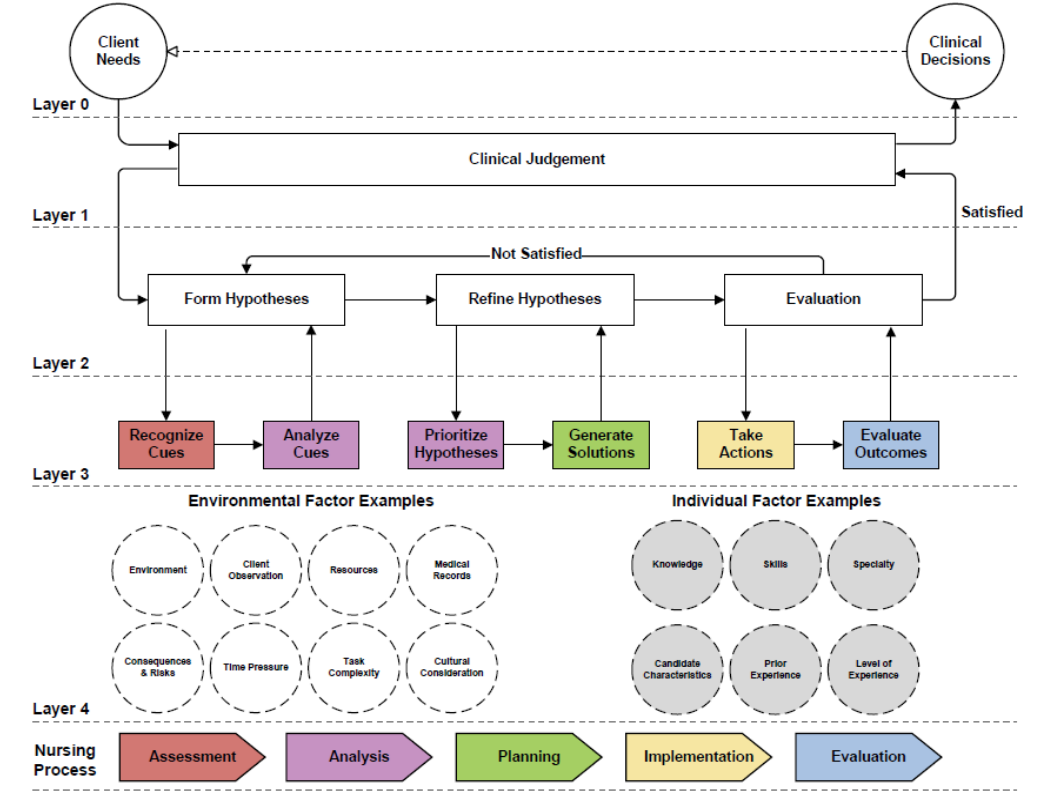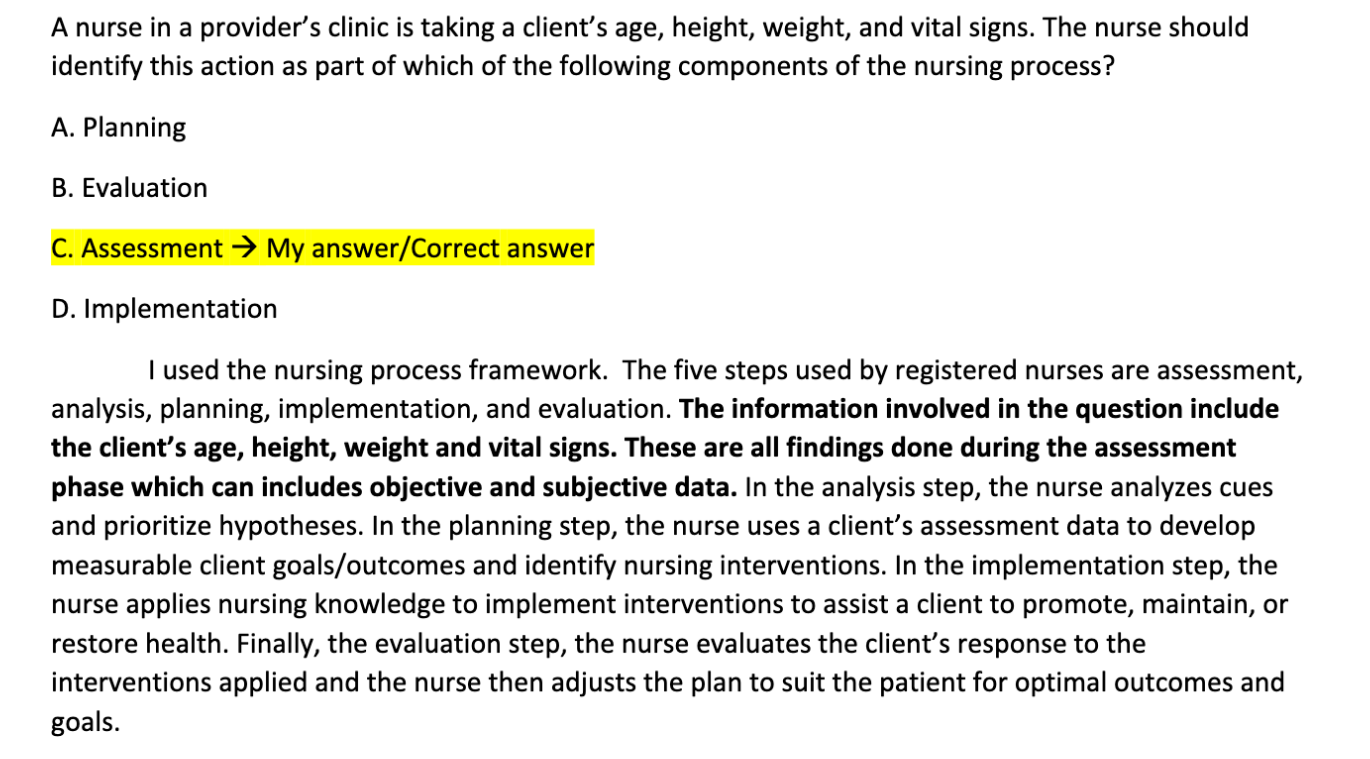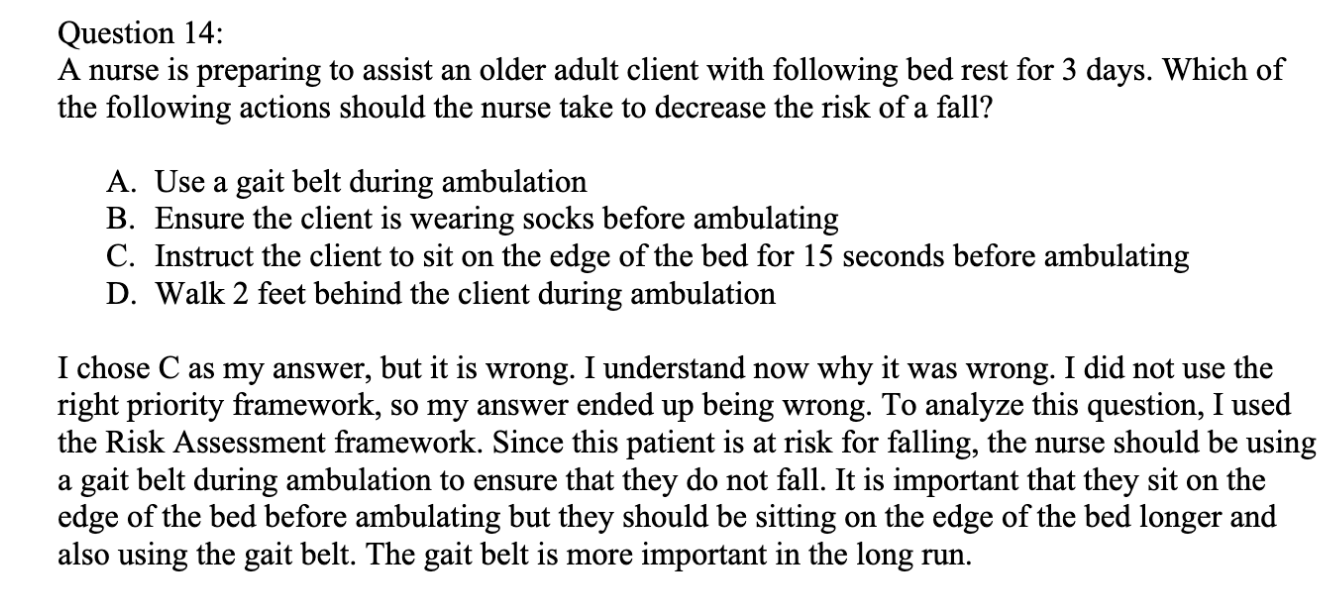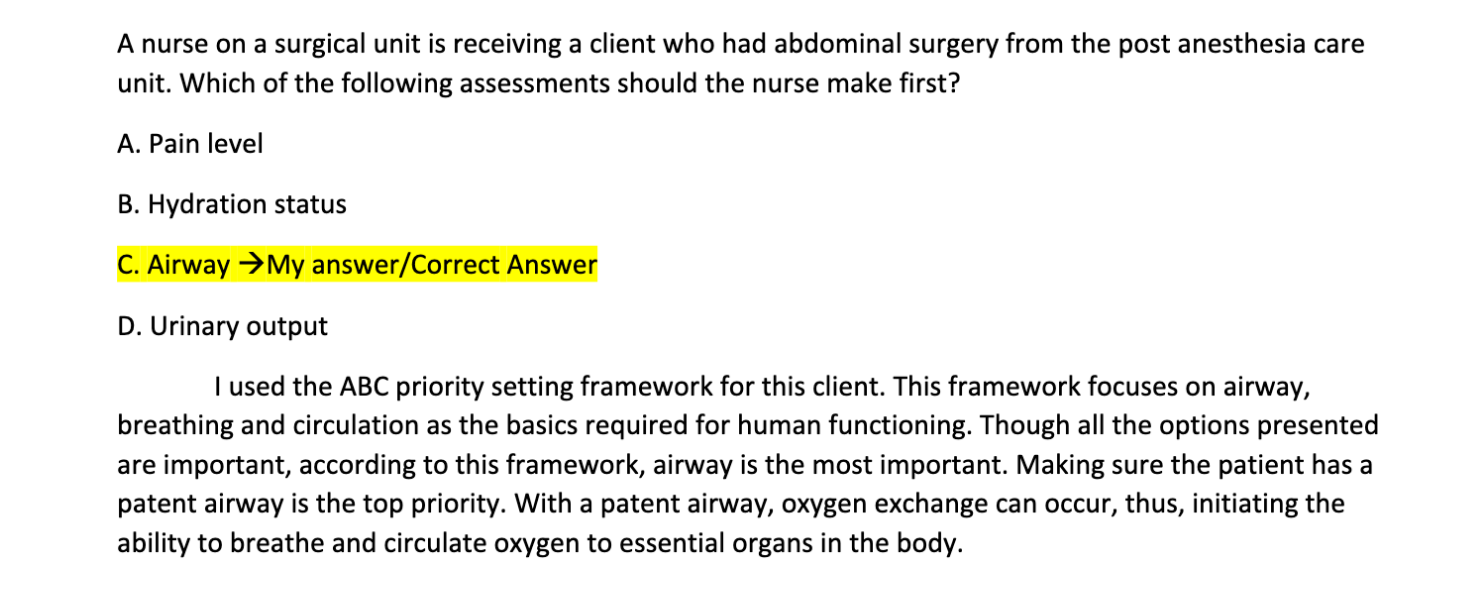In this issue of Changing Course, we will examine how to make priorities a priority. According to the National Council of State Boards of Nursing (NCSBN) 2021 RN Practice Analysis, new-to-practice nurses spend an average of 7 hours per shift managing care and establishing priorities and 97.6% of new nurses report that they prioritize the delivery of client care with an average frequency of 4.38 times per day on a scale of “0” times to “5+” times per day (2022b). Additionally, the average importance rating for prioritizing by new nurses is 4.48 on a scale of “1” (not important) to “5” (critically important) (NCSBN, 2022b). The NCSBN periodically performs a practice analysis to evaluate the validity of the National Council Licensure Examination (NCLEX®) test plan. Not only is the practice analysis critical to support a psychometrically sound licensing exam, it also outlines job responsibilities and activities and their relative importance and frequency for new-to-practice nurses (Williams et al., 2014).
Connecting Clinical Judgment and Prioritizing
Clinical judgment is highly dependent on the ability to prioritize. The NCSBN defines clinical judgment as the outcome of critical thinking and decision making that involves using “nursing knowledge to observe and assess presenting situations, identify prioritized client concerns, and generate the best possible evidence-based solutions in order to deliver safe care” (2022b p. 5). The process of clinical judgment is outlined in the Clinical Judgment Measurement Model used in the next-generation NCLEX® (NGN). When developing clinical judgment, student nurses must learn how to recognize and analyze relevant cues and then prioritize the most important client needs (see Figure 1).
Figure 1
Nursing Clinical Judgment Measurement Model
(NCSBN, 2022a)
The ability to prioritize must be cultivated at the onset of the student nurse’s educational journey to foster clinical judgment, ensure success on the NGN and most importantly to graduate nurses that are ready for practice. This is why it is essential for nurse educators to make priorities a priority!
The Prioritizing Priorities Activity
Nursing students and new-to-practice nurses use rule-based analytic thinking rather than intuitive thinking processes; therefore, structured methods are a good strategy when teaching prioritization (Cader et al., 2005). The Prioritizing Priorities activity provides an organized way for students to practice prioritizing. There are several steps to this activity.
The first step is to provide students with an introduction to prioritization in nursing which includes common prioritizing strategies like “airway, breathing, circulation (ABC)”, safety versus risk, Maslow’s Hierarchy of Needs, and time-sensitive vs routine. I prefer to use Assessment Technology Institute’s (ATI’s) Priority-setting Frameworks. There are other frameworks that you can use like Kaplan’s RN Decision Tree.
Next, students complete 15 NCLEX® type questions. For the activity to have the most meaning, I recommend the students select questions in the topical area they are studying. For example, in pediatrics, students select pediatric questions. Currently, my students use ATI Learning Systems to create their quizzes, but PrepU, Davis Edge, Elsevier Adaptive Quizzing, UWorld, or any other quizzing platform will work.
After completing the questions, students select 5 of the questions and copy them with the answer choices to another document. Now they reflect on how they answered each of the five questions and provide their reasoning below the question.
Some things to consider during reflection include:
-
Did I answer the question correctly, or did I choose the wrong answer?
-
Why is the wrong answer wrong?
-
Which prioritizing strategy best fits the question and why?
-
Did I initially use a prioritizing strategy to answer the question, or will I use it in the future for similar questions?
Finally, they submit their questions with reflection for grading.
I recommend students complete the Prioritizing Priorities activity weekly. The first time assigned, I have students answer 15 questions and provide 5 reflections. In subsequent activities, I have them answer 25 questions with 2-3 reflections. I also use this activity routinely in class to dissect a question, which reinforces the process.
Learning through Reflection

Reflection is an integral part of nursing practice. In fact, reflection has been identified as an essential competency for nurses at all levels of practice by the American American Association of Colleges of Nursing’s (AACN) (AACN, 2021). Reflection supports a growth mindset and encourages students to learn from their mistakes (Miller, 2019). It sparks the spirit of inquiry that fosters personal growth and life-long learning. When participating in reflective practice, nursing students become more aware of the learning process, and are more likely to apply the approach to future experiences (Ng, 2012). The Prioritizing Priorities activity can support both reflection-in-action and reflection-on-action. Reflection-in-action occurs in the moment, whereas reflection-on-action occurs after the moment (Mann, 2016). When using the Prioritizing Priorities activity in-class students reflect-in-action, which promotes awareness and fosters purposeful usage of their prioritizing skills. When used as a weekly activity, students’ reflect-on-action, which may lead to future changes in behavior. Additionally, promoting frequent reflection dispels the idea that reflection is a sporadic practice and helps nursing students to embed it as part of their every day routine.
Student Samples
Here are 3 examples of student work.
Figure 2
Student Sample 1

Figure 3
Student Sample 2

Figure 4
Student Sample 3

Mastery Demonstration
The Prioritizing Priorities activity provides a means for educators to assess mastery of nursing competencies and supports meeting AACN’s Essentials (AACN, 2021) competencies across several domains (see Table 1).
Table 1
Alignment with AACN Essentials
| Domain | Competency (Subcompetency) |
| Knowledge for Nursing Practice | 1.3a,b,c |
| Person-Centered Care | 2.4c; 2.5c |
| Scholarship for the Nursing Discipline | 4.1c |
| Professionalism | 9.1b |
| Personal, Professional, and Leadership Development | 10.2a,d |
Competence mastery through the Prioritizing Priorities activity can be assessed with a rubric, giving students the opportunity to be observed, for their work to be measured, and to receive feedback. I evaluate this activity as either “Complete” or “Incomplete”; however, the rubric can be easily modified to assign points (see Table 2). Whether used as an in-class or independent graded assignment with a rubric, the Prioritizing Priorities activity provides a means for educators to assess mastery of nursing competencies.
Table 2
Rubric
| Criteria | Exceeds | Meets | Please resubmit |
| Did I answer the question correctly, or did I choose the wrong answer? | Includes an explanation of why the wrong answer is wrong in your own words | Identifies if the question was answered correctly or incorrectly | Does not identify if the question was answered correctly or incorrectly |
| Which prioritizing strategy best fits the question and why? | Includes a second prioritizing strategy that may also apply | Identifies which prioritizing strategy best fits the question and explains why | Does not identify which prioritizing strategy best fits the question or does not explain why |
| Did I initially use the prioritizing strategy to answer the question or will I use it in the future for similar questions? | Describes how the prioritizing strategy may help to rule out incorrect answer choices if you don’t know the answer | Identifies if a prioritizing strategy was initially used to answer the question or if it will be used in the future | Does not identify if a prioritizing strategy was initially used to answer the question or if it will be used in the future |
| Grade | Complete | Incomplete | |
Try it!
There are many ways to integrate the Prioritizing Priorities activity into your teaching toolkit. My favorite is using it to develop student thinking during class. Whether used in-class or as an independent learning strategy, the Prioritizing Priorities activity promotes participative learning and development of competence in prioritizing skills. Watch as your students learn to make priorities a priority!
Coming up in the next edition of Changing Course . . . Investing in Inclusion.
References
Cader, R., Campbell, S., and Watson, D. (2005). Cognitive continuum theory in nursing decision-making. Journal of Advanced Nursing, 49, 397-405. https://doi.org/10.1111/j.1365-2648.2004.03303.x
Mann, K. (2016). Reflection’s role in learning: Increasing engagement and deepening participation. Perspectives on Medical Education, 5(5), 259-261. https://link.springer.com/article/10.1007/s40037-016-0296-y
Miller, A. (2019). Treating reflection as a habit, not an event. Edutopia. https://www.edutopia.org/article/treating-reflection-habit-not-event
National Council of State Boards of Nursing. (2022a). NCSBN Clinical Judgment Measurement Model. https://www.ncsbn.org/exams/next-generation-nclex/NGN+Resources/clinical-judgment-measurement-model.page
National Council of State Boards of Nursing. (2022b). 2021 RN practice analysis: Linking the NCLEX-RN® Examination to Practice. Practice Brief. Vol 81. https://www.ncsbn.org/public-files/21_NCLEX_RN_PA.pdf
Ng, S. (2012). Reflection and reflective practice: Creating knowledge through experience. Seminars in Hearing. 33(2), 117-134. https://doi.org/10.1055/s-0032-1311673
Williams, N., Kim, D., and Dickison, P. (2014). Validating the NCLEX-RN test plan: Comparing practice analysis data. Journal of Nursing Regulation, 4(3), 39-43. https://doi.org/10.1016/S2155-8256(15)30054-5
Disclaimer
I have not been paid to promote any of the products listed and will not receive commission, payment, or gifts of any kind if you click on a link in this blog.
